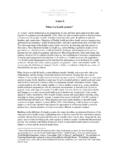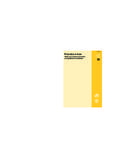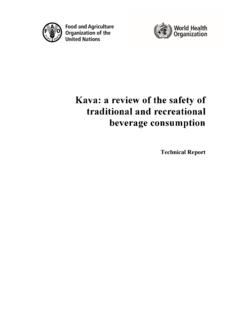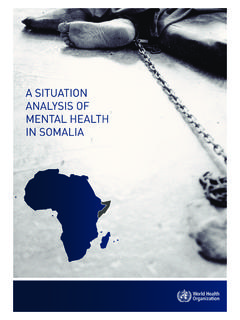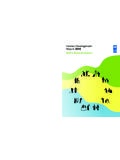Transcription of A global brief on Hypertension - International Society of ...
1 A global brief on Hypertension | Foreword1 GETTYW orld health Day 2013 Silent killer, global public health crisisA global brief on Hyper tensionS world health Organization 2013 All rights reserved. Publications of the world health Organization are available on the WHO web site ( ) or can be purchased from WHO Press, world health Organization, 20 Avenue Appia, 1211 Geneva 27, Switzerland (tel. : +41 22 791 3264 ; fax : +41 22 791 4857 ; e-mail : Requests for permission to reproduce or translate WHO publications - whether for sale or for non-commercial distribution - should be addressed to WHO Press through the WHO web site ( ). The designations employed and the presentation of the material in this publication do not imply the expression of any opinion whatsoever on the part of the world health Organization concern-ing the legal status of any country, territory, city or area or of its authorities, or concerning the delimitation of its frontiers or boundaries.)
2 Dotted lines on maps represent approximate border lines for which there may not yet be full agreement. The mention of specific companies or of certain manufacturers products does not imply that they are endorsed or recommended by the world health Organization in preference to others of a similar nature that are not mentioned. Errors and omissions excepted, the names of proprietary products are distinguished by initial capital letters. All reasonable precautions have been taken by the world health Organization to verify the infor-mation contained in this publication. However, the published material is being distributed with-out warranty of any kind, either expressed or implied. The responsibility for the interpretation and use of the material lies with the reader. In no event shall the world health Organization be liable for damages arising from its use.
3 Design and layout : MEO design communication web, SwitzerlandPhotos : p. 14 : WHO/Jim Holmes ; p. 19 : WHO/C. Black ; p. 20 : WHO/C. Black ; p. 31 : WHO/Harold Ruiz ; p. 33 : WHO ; : WHO/S. HollymanPrinted by : WHOD ocument number : WHO/DCO/ queries regarding this document should be addressed to : health Day 2013a global brief on hyper tensionSFOREWORD ExECutivE SuMMARy SECtiOn i Why hyper tension is a major public health issueSECtiOn ii Hyper tension : the basic facts SECtiOn iii How public health stakeholders can tackle hyper tension Governments and policy-makers health workers Civil Society Private sector Families and individuals world health Organization SECtiOn iv Monitoring the impact of action to tackle hyper tension5 7816 2234 ContentsA global brief on Hypertension | Foreword5 FOREWORDWe live in a rapidly changing environment.
4 Throughout the world , human health is being shaped by the same powerful forces : demographic ageing, rapid urbanization, and the globalization of unhealthy lifestyles. Increasingly, wealthy and resource-constrained countries are facing the same health issues. One of the most striking examples of this shift is the fact that noncommunicable dis-eases such as cardiovascular disease, cancer, diabetes and chronic lung diseases have overtaken infectious diseases as the world s leading cause of of the key risk factors for cardiovascular disease is hyper tension - or raised blood pressure. Hyper tension already affects one billion people worldwide, leading to heart attacks and strokes. Researchers have estimated that raised blood pressure currently kills nine million people every year. But this risk does not need to be so high.
5 Hyper tension can be prevented. Doing so is far less costly, and far safer for patients, than interventions like cardiac bypass surgery and dialysis that may be needed when hyper tension is missed and goes efforts to tackle the challenge of noncommunicable diseases have gained momentum since the 2011 United Nations Political Declaration on the prevention and control of noncommunicable diseases. The world health Organization is developing a global Plan of Action, for 2013-2020, to provide a roadmap for country-led action for prevention and control of non-communicable diseases. WHO s Member States are reaching consensus on a global monitoring framework to track progress in preventing and controlling these diseases and their key risk factors. One of the targets envisaged is a substantial reduction in the number of people with raised blood tension is a silent, invisible killer that rarely causes symptoms.
6 Increasing public awareness is key, as is access to early detection. Raised blood pressure is a serious warning sign that signi- ficant lifestyle changes are urgently needed. People need to know why raised blood pressure is dangerous, and how to take steps to control it. They need to know that raised blood pressure and other risk factors such as diabetes often appear together. To raise this kind of awareness, countries need systems and services in place to promote universal health coverage and support healthy lifestyles : eating a balanced diet, reducing salt intake, avoiding harmful use of alcohol, getting regular exercise and shunning tobacco. Access to good quality medicines, which are effective and inexpensive, is also vital, particularly at the primary care level. As with other noncommunicable diseases, awareness aids early detection while self-care helps ensure regular intake of medication, healthy behaviours and better control of the condition.
7 High-income countries have begun to reduce hyper tension in their populations through strong public health policies such as reduction of salt in processed food and widely available diagnosis and treatment that tackle hyper tension and other risk factors together. Many can point to examples of joint action across sectors that is effectively addressing risk factors for raised blood pressure. In contrast, many developing countries are seeing growing numbers of people who suffer from heart attacks and strokes due to undiagnosed and uncontrolled risk factors such as hyper tension. This new WHO global brief on hyper tension aims to contribute to the efforts of all Member States to develop and implement policies to reduce death and disability from noncommunicable diseases. Prevention and control of raised blood pressure is one of the cornerstones of these efforts.
8 Dr Margaret Chan Director-General world health Organization A global brief on Hypertension | Executive summary7 ExEcUTIvE SUMMARyHyper tension, also known as high or raised blood pressure, is a global public health contributes to the burden of heart disease, stroke and kidney failure and premature mortality and disability. It disproportionately affects populations in low- and middle-income countries where health systems are tension rarely causes symptoms in the early stages and many people go undiagnosed. Those who are diagnosed may not have access to treatment and may not be able to successfully control their illness over the long term. There are significant health and economic gains attached to early detection, adequate treatment and good control of hyper tension. Treating the complications of hyper tension entails costly interven-tions such as cardiac bypass surgery, carotid artery surgery and dialysis, draining individual and government behavioural risk factors, unhealthy diet, harmful use of alcohol and physical inac-tivity, can prevent hyper tension.
9 Tobacco use increases the risk of complications of hyper tension. If no action is taken to reduce exposure to these factors, cardiovascular disease incidence, including hyper tension, will increase. Salt reduction initiatives can make a major contribution to prevention and control of high blood pressure. However, vertical programmes focusing on hyper tension control alone are not cost effective. Integrated noncommunicable disease programmes implemented through a primary health care approach are an affordable and sustainable way for countries to tackle hyper tension. Prevention and control of hyper tension is complex, and demands multi-stakeholder collaboration, including governments, civil Society , academia and the food and beverage industry. In view of the enormous public health benefits of blood pressure control, now is the time for concerted action.
10 I | Why Hypertension is a major public health issue | A global brief on hypertension8 SseCtion i Why hyper tension is a major public health issueA global brief on Hypertension | Why Hypertension is a major public health issue | I911-4950-8889-131132-240 Figure 02cerebrovascular disease mortality rates (age standardized, per 100 000)Source :Causes of death 2008, world health Organization, Geneva12-74 Data not availableData not available75-108109-151152-405 Figure 01ischemic heart disease mortality rates(age standardized, per 100 000)Source :Causes of death 2008, world health Organization, GenevaGlobally cardiovascular disease accounts for approximately 17 million deaths a year, near-ly one third of the total (1). Of these, complications of hyper tension account for million deaths worldwide every year (2). Hyper tension is responsible for at least 45% of deaths due to heart disease (total ischemic heart disease mortality is shown in Fig.)



